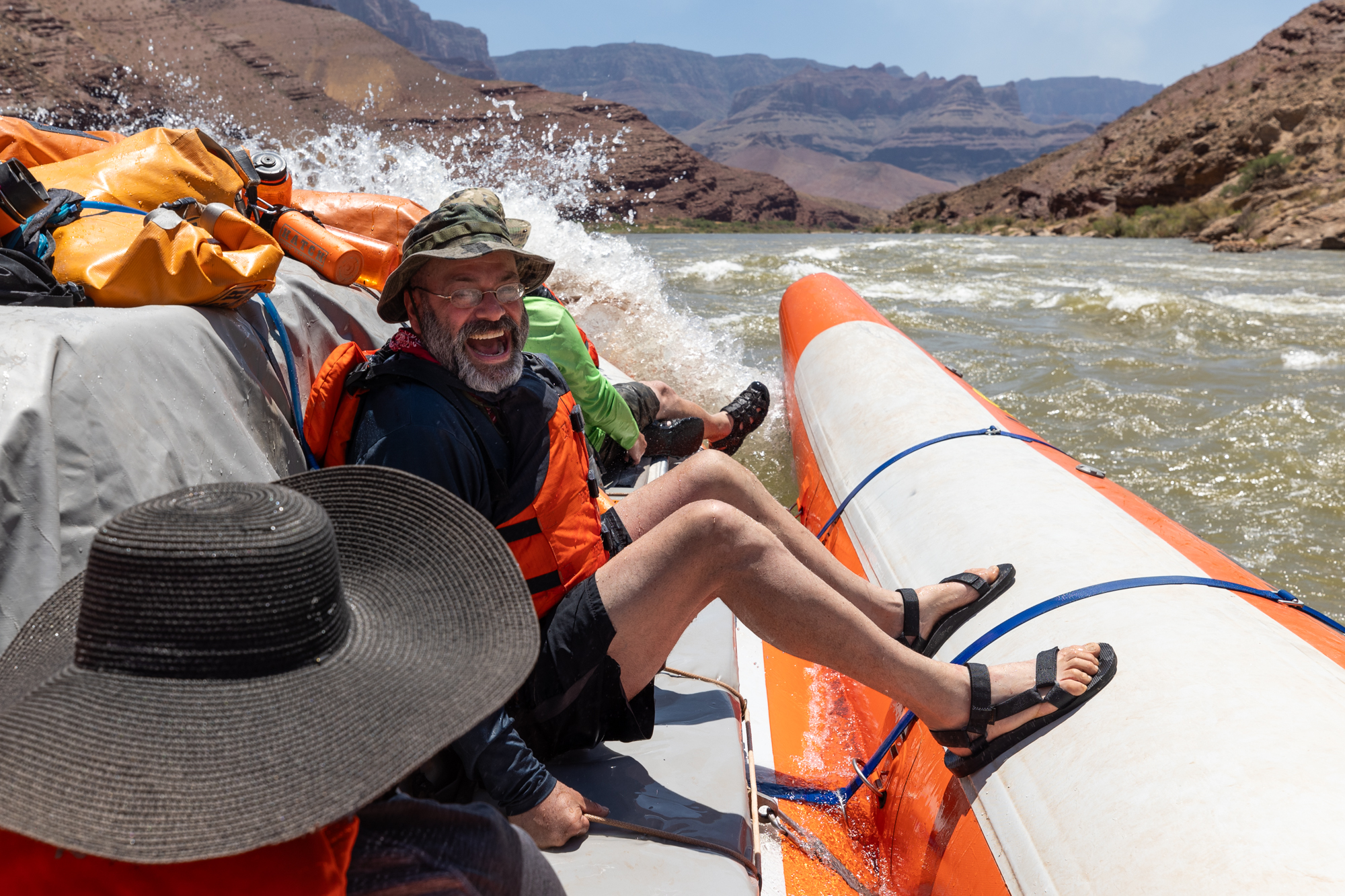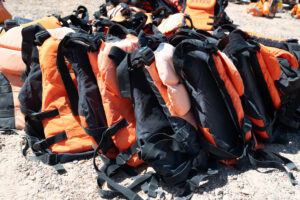Happy Holidays from Hatch! Whether you’re celebrating Christmas or other holidays throughout this wintry season, we are wishing you...


One of the first stories you’ll hear on the river is of F.M. Brown who drowned in a riffle downstream from Soap Creek Rapid. He wasn’t wearing a life jacket. Despite being a strong swimmer, this small current of water got the better of him before his companions could reach and rescue him.
It’s incidents like this that have led to modern laws mandating the use of life jackets for water-based recreational activities. Fortunately, life jackets, or personal floatation devices (PFDs), have evolved over the years. During Brown’s time, life jackets were bulky cork vests—few people would be willing to wear them all day long. They were also expensive, which is why Brown and Stanton chose not to purchase them for their trip surveying the Grand Canyon for a railroad. Later, lighter weight inflatable floatation devices were invented and used in the navy among other places.

Today, a typical life jacket is made of a foam core with nylon casing. They are rated based on the amount of flotation they provide. A Hatch life jacket, for example, provides 25 pounds of floatation. This may sound like it’s far too little to support a human’s body weight, but in water humans weight much less. Our bodies are about 80% water and 15% fat leaving only about 5% left to offset with a life jacket. On a 200 pound person, that’s only 10 pounds.
Any time you’re on the water, we’ll require you to wear your life jacket. You never know when a step could turn into a slip and fall. Your safety is our number 1 priority, so expect the guides to remind you if you forget to put your jacket on or if it’s on wrong. Here are the keys to wearing one of our life jackets correctly:
With safety taken care of, you’ll be that much more at ease whether you’re bouncing through the rapids of the Grand Canyon or floating down the calmest parts of the Colorado River.

If you want to learn more about how PFD’s have evolved through history check out this blog!
With the holiday’s right around the corner we thought we’d share some of our favorite gift ideas for people who are going on the river with us!
Want to plan a Grand Canyon rafting trip? We’ve compiled some helpful blogs to make booking your trip a whole lot easier!
The question we hear most often is: “What do I need in my day bag today?” The easiest answer? Be like a Boy Scout: Always be prepared.